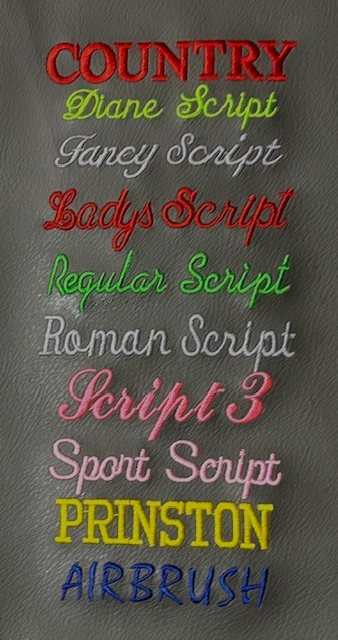Personalized Lab Coats with Embroidery for Medical Professionals
The Art of Custom-made Embroidery: Opening the Secrets to Creating Special and Remarkable Designs
The secrets to producing customized embroidery designs that mesmerize the eye and leave an enduring impact lie in a delicate balance of technique, imagination, and interest to detail. As we delve into the world of customized embroidery, we reveal the nuanced interaction in between thread selection, sew complexity, and layout personalization that elevates a plain garment to a work of art.
Picking the Right Needlework Threads
When selecting needlework threads, what vital aspects should you consider to ensure the best outcomes for your customized layouts? The option of embroidery thread is critical in identifying the last outcome of your embroidered layout.
In addition, the weight or density of the thread plays a significant role in the look of the embroidery. Thicker strings can add measurement and appearance to your design, while finer strings are excellent for elaborate details and small text. Additionally, taking into consideration the shade fastness and washability of the thread is essential to make certain that your custom designs preserve their top quality and vibrancy over time. By very carefully reviewing these elements and selecting premium threads that satisfy your certain demands, you can boost the visual appeal and durability of your stitched developments.
Exploring Different Stitch Strategies
To explore the world of 'Discovering Various Stitch Methods', one must understand the ins and outs and subtleties that each sewing technique offers the art of needlework. Various stitch techniques not only add visual interest but also contribute to the overall texture and dimension of the style. One preferred stitch technique is the satin stitch, which includes closely stuffed parallel stitches to produce a smooth and glossy surface area, suitable for filling up in forms and developing vibrant lays out.
On the various other hand, the backstitch is a functional strategy usually made use of for laying out and including fine details. It involves sewing in reverse to develop a solid line of needlework. Furthermore, the French knot stitch includes a responsive component to layouts, perfect for developing textured accents like flower facilities or ornamental touches.
Checking out different stitch methods allows embroiderers to have fun with light, shadow, and deepness within their designs, raising the aesthetic charm and artistic top quality of their needlework jobs. By mastering numerous stitching approaches, one can open limitless possibilities for creating special and remarkable personalized needlework items.
Incorporating Personalized Design Aspects
Having actually discovered the intricacies of different stitch techniques such as the satin stitch, backstitch, and French knot, the emphasis now changes towards incorporating individualized layout components in customized needlework projects. Personalized layout elements play a vital duty in making embroidery tasks truly unique and memorable. One means to integrate customization is by adding initials, names, or significant dates to the style. This not just adds a customized touch however additionally boosts the nostalgic check my source worth of the needlework piece.
Another method to integrate tailored design aspects is by consisting of icons or concepts that hold special meaning to the recipient or show their rate of interests and character. As an example, incorporating a favored flower, pet, or hobby-related symbol can make the embroidery layout much more significant and personalized. Furthermore, picking shades that resonate with the recipient or straighten with the designated motif can further improve the customization of the embroidery task.
Grasping the Art of Color Control

One key facet of color coordination is comprehending color theory. This consists of recognizing how various shades connect with each various other, the feelings they convey, and how they can be incorporated to develop aesthetically enticing designs. By applying color theory principles, embroiderers can create harmonious color palettes that improve the general appearance of the style.
Additionally, paying focus to comparison is vital in shade control. Making use of contrasting shades can aid certain components of the style pop, boost clarity, and develop a visually dynamic needlework piece. By understanding the art of shade control, embroiderers can boost their layouts and produce unforgettable pieces that resonate with clients and viewers alike.
Enhancing Texture With Advanced Needlework Stitches
Bullion knots, on the other hand, can be made use of to produce twisted, ropelike aspects that add a lavish feeling to the embroidery. Trying out with these sophisticated embroidery stitches permits you to press the limits of typical needlework and create absolutely special and visually appealing structures in your styles.
Verdict
In conclusion, the art of custom embroidery involves a mix of selecting the best strings, discovering various stitch strategies, integrating personalized layout aspects, mastering shade coordination, and boosting texture with innovative stitches. By comprehending and carrying out these crucial elements, embroiderers can develop distinct and memorable layouts that showcase their creativity and skill. Needlework enthusiasts can open the tricks to producing attractive and bespoke items that stick out and leave a long-term impact.